Mushroom Compost Benefits: A Detailed Guide to Its Benefits
Introduction
Mushroom compost, often referred to as “spent mushroom substrate” (SMS), has gained significant popularity among gardeners, farmers, and landscapers as a type of organic fertilizer. This nutrient-rich material, a byproduct of mushroom cultivation, offers numerous benefits when used as a soil amendment or mulch. In this article, we will explore the various benefits of mushroom compost, how it is produced, its application in different gardening scenarios, and potential drawbacks to consider. By the end, you’ll thoroughly understand why mushroom compost is a valuable addition to any garden or agricultural setting.
What is Mushroom Compost?
Mushroom compost is the residual organic matter left after commercial mushroom cultivation. It consists of various organic materials used as a growing medium for mushrooms. Once growers harvest the mushrooms, they often recycle and sell the remaining substrate as mushroom compost.
Ingredients Used in Mushroom Compost
The ingredients in mushroom compost can vary, but they typically include:
- Straw: Provides structure and aeration.
- Horse or Chicken Manure: Adds essential nutrients like nitrogen, phosphorus, and potassium.
- Gypsum: Improves soil structure and adds calcium and sulfur.
- Peat Moss: Increases water retention and adds organic matter.
- Cottonseed Meal, Soybean Meal, or Other Organic Fertilizers: Enhances the nutrient content of the compost.
- Lime: Adjusts the compost’s pH to create a more favorable environment for mushroom growth.
These ingredients are mixed and composted in a controlled environment to create a nutrient-rich medium for growing mushrooms. After harvesting, the remaining compost is repurposed for use in gardens and farms.
Nutrient Content of Mushroom Compost
Mushroom compost is rich in organic matter and essential nutrients, making it an excellent soil amendment. The exact nutrient content can vary depending on the ingredients used, but mushroom compost typically contains:
- Nitrogen (N): Essential for leafy growth and overall plant health.
- Phosphorus (P): Promotes root development and flowering.
- Potassium (K): Enhances disease resistance, improves fruit quality, and strengthens plant cell walls.
- Calcium: Crucial for cell wall structure and stability, helps prevent blossom end rot in fruits and vegetables.
- Sulfur: Important for protein synthesis and overall plant growth.
- Organic Matter: Improves soil structure, water retention, and microbial activity.
This combination of nutrients and organic matter makes mushroom compost a well-rounded soil amendment that can benefit a wide range of plants.
The Benefits of Mushroom Compost
Mushroom compost offers a multitude of benefits when used in gardening and agriculture. Its rich nutrient content and organic matter make it an ideal amendment for improving soil health, promoting plant growth, and enhancing overall garden productivity.
1. Soil Enrichment and Fertility
One of the primary benefits of mushroom compost is its ability to enrich soil fertility. The organic matter in mushroom compost improves the soil’s physical structure, allowing it to retain moisture and nutrients more effectively. This is particularly beneficial for sandy soils, which often struggle to retain water and nutrients.
The compost also adds essential nutrients like nitrogen, phosphorus, and potassium, which are vital for plant growth. As the organic matter decomposes, it releases these nutrients slowly over time, providing a steady supply of food for plants. This slow-release nature of mushroom compost reduces the need for frequent fertilization, making it a cost-effective and environmentally friendly option.
2. Improved Soil Structure
Mushroom compost significantly improves soil structure by increasing the amount of organic matter in the soil. Organic matter acts as a binding agent that helps to aggregate soil particles, creating a crumbly, well-aerated structure. This improved soil structure allows for better root penetration, enhanced water infiltration, and increased oxygen availability to plant roots.
In clay soils, which are often heavy and compacted, mushroom compost helps to break up the soil, making it more porous and easier to work with. In sandy soils, it helps to bind the particles together, improving water retention and reducing the risk of erosion.
3. Enhanced Water Retention
Water retention is a critical factor in gardening, especially in areas prone to drought or in sandy soils that drain quickly. Mushroom compost has excellent water-holding capacity, which means it can help the soil retain moisture for longer periods. This reduces the need for frequent watering and helps plants survive during dry spells.
The improved water retention also means that nutrients are less likely to leach away from the root zone, ensuring that plants have access to the nutrients they need to thrive. This is particularly beneficial for vegetables, fruits, and other high-demand crops that require consistent moisture levels.
4. Promotes Healthy Microbial Activity
Healthy soil teems with microbial life, which plays a crucial role in nutrient cycling, organic matter decomposition, and overall soil health. Mushroom compost is rich in organic matter, providing a food source for beneficial soil microbes. These microbes, in turn, break down the organic matter, releasing nutrients that plants can readily absorb.
Beneficial microbes also help to suppress soil-borne diseases by outcompeting harmful pathogens. This creates a healthier growing environment for plants, reducing the need for chemical fertilizers and pesticides.
5. Reduces Soil Erosion
Soil erosion poses a significant problem in many agricultural settings, particularly on sloped land or in areas with heavy rainfall. The organic matter in mushroom compost improves soil structure, making it more resistant to erosion. The compost binds soil particles together, reducing the risk of soil being washed away by rain or irrigation.
Additionally, the improved water retention provided by mushroom compost means that less water runs off the surface, further reducing erosion. This makes mushroom compost an excellent choice for erosion control in gardens, farms, and landscaping projects.
6. Supports Sustainable Gardening Practices
Mushroom compost is a byproduct of mushroom farming, making it a recycled and sustainable resource. By using mushroom compost in your garden, you reduce waste and promote a more sustainable approach to gardening. This is particularly important in an era where environmental sustainability is a growing concern.
Moreover, because mushroom compost is rich in organic matter and nutrients, it reduces the need for synthetic fertilizers and pesticides. This not only saves money but also minimizes the environmental impact of gardening practices. Organic gardening with mushroom compost supports biodiversity, improves soil health, and contributes to a more sustainable ecosystem.
7. Improves Plant Health and Growth
The combination of improved soil structure, enhanced water retention, and increased nutrient availability provided by mushroom compost leads to healthier, more vigorous plants. Whether you’re growing vegetables, flowers, or ornamental plants, the benefits of mushroom compost are evident in the lush, green foliage, robust root systems, and abundant blooms or fruit.
Mushroom compost is particularly known for promoting strong root development, which is the foundation of a healthy plant. Strong roots allow plants to access water and nutrients more efficiently, leading to better growth and higher yields.
8. Versatility in Application
Mushroom compost is a versatile soil amendment that can be used in various gardening and landscaping scenarios. It can be applied as a top dressing, mixed into garden beds, used in container gardening, or spread as mulch around trees and shrubs. Its versatility makes it a valuable addition to any garden, regardless of size or type.
For instance, in vegetable gardens, mushroom compost can be mixed into the soil before planting to provide a nutrient-rich environment for seedlings. In flower beds, it can be used as mulch to suppress weeds and retain moisture. In container gardening, it can be mixed with potting soil to improve the growing medium’s water-holding capacity and nutrient content.
How to Use Mushroom Compost
To maximize the benefits of mushroom compost, use it correctly. Here are some tips on how to effectively incorporate mushroom compost into your gardening routine:
1. Soil Amendment
When using mushroom compost as a soil amendment, mix it into the soil before planting or add it to existing beds. A general guideline is to apply a 2-3 inch layer of mushroom compost on top of the soil and then mix it into the top 6-8 inches of soil. This ensures even distribution of the compost and its nutrients throughout the root zone.
2. Mulching
Mushroom compost also works well as mulch around plants. Apply a 2-3 inch layer of compost around the base of plants, leaving a small gap around the stem to prevent rot. As the compost breaks down, it will slowly release nutrients into the soil while helping to retain moisture and suppress weeds.
3. Container Gardening
In container gardening, mix mushroom compost with potting soil to create a nutrient-rich growing medium. A common mix is 1 part mushroom compost to 2 parts potting soil. This blend provides a well-balanced environment for container plants, improving both water retention and nutrient availability.
4. Lawn Care
Mushroom compost can also be used to top-dress lawns, providing a natural source of nutrients and organic matter. Spread a thin layer of compost (about 1/4 inch) over the lawn and then rake it in to ensure even distribution. The compost will help improve soil structure, promote healthy grass growth, and reduce the need for synthetic fertilizers.
5. Erosion Control
For areas prone to erosion, mushroom compost can be applied to stabilize the soil. Spread a thick layer of compost over the affected area and mix it into the topsoil. The compost will help bind the soil particles together, reducing the risk of erosion and promoting the growth of vegetation.
Potential Drawbacks of Mushroom Compost
While mushroom compost offers many benefits, there are some potential drawbacks to consider:
High Salt Content
One of the primary concerns with mushroom compost is its relatively high salt content. During mushroom cultivation, certain salts can accumulate in the compost, particularly if manure or other materials high in salts were used. High salt levels can harm certain plants, particularly those sensitive to saline conditions, such as azaleas, rhododendrons, and other acid-loving plants.
To mitigate this issue, test the compost before widespread application, especially if you’re using it in areas with salt-sensitive plants. You can also blend mushroom compost with other types of organic matter to dilute the salt concentration. Alternatively, you can let the compost sit and “age” by exposing it to the elements for a few weeks, which can help leach out excess salts.
pH Levels
Mushroom compost tends to have a slightly alkaline pH, typically ranging between 6.5 and 7.5. While this pH level suits many garden plants, it may not be ideal for acid-loving plants like blueberries, camellias, or heathers. If you garden in soil already on the alkaline side, adding too much mushroom compost could raise the pH to levels unfavorable for certain plants.
To address this, mix mushroom compost with other composts or organic materials that have a more neutral or acidic pH. This will help balance the pH levels and make the compost more versatile for a wider range of plants.
Nutrient Imbalance
Although mushroom compost is rich in organic matter and nutrients, it might not provide a perfectly balanced fertilizer for all plants. For instance, while it is relatively high in phosphorus and potassium, it might not supply enough nitrogen for heavy-feeding plants like leafy greens or corn. Additionally, if used exclusively, mushroom compost might not provide all the micronutrients required by certain plants.
To avoid nutrient imbalances, use mushroom compost as part of a broader soil management strategy, incorporating other organic amendments, fertilizers, or composts to ensure that all essential nutrients are available in adequate amounts.
Potential for Weed Seeds
Like any compost, mushroom compost could contain weed seeds, especially if the original substrate materials were not thoroughly sterilized. While the heat generated during the composting process usually kills most weed seeds, there is still a possibility that some could survive and germinate in your garden.
To minimize this risk, purchase mushroom compost from reputable sources that ensure proper sterilization and processing. If you’re making your own mushroom compost or acquiring it from local farms, consider heat-treating it or allowing it to age for a period to reduce the likelihood of weed seed germination.
Application Caution
Over-application of mushroom compost can lead to problems such as nutrient runoff, especially if applied too heavily or in areas with poor drainage. Excess nutrients, particularly phosphorus, can leach into waterways and contribute to issues like algal blooms. Therefore, it’s important to apply mushroom compost in moderation, following recommended guidelines for the specific plants or garden areas you’re working with.
How Mushroom Compost Compares to Other Compost Types
Mushroom compost is just one of many types of compost available to gardeners. Here’s how it compares to other common composts:
Mushroom Compost vs. Regular Compost
Regular compost is made from a diverse mix of organic materials such as kitchen scraps, garden waste, and leaves. While regular compost is highly versatile and beneficial, mushroom compost has the advantage of being richer in certain nutrients like phosphorus and potassium due to the specific ingredients used in its production. However, regular compost generally has a more balanced nutrient profile and can be less alkaline, making it suitable for a wider range of plants.
Mushroom Compost vs. Manure
Manure is another popular soil amendment, especially for its high nitrogen content. Mushroom compost, on the other hand, is often more balanced in its nutrient content and less likely to burn plants due to excessive nitrogen. Additionally, mushroom compost is less likely to introduce harmful pathogens or weed seeds compared to raw manure. However, manure is an excellent choice for heavy feeders like corn, whereas mushroom compost is better for improving soil structure and overall fertility.
Mushroom Compost vs. Leaf Mold
Leaf mold is a type of compost made primarily from decomposed leaves. It is particularly effective at improving soil structure and moisture retention, much like mushroom compost. However, leaf mold is lower in nutrients compared to mushroom compost and is best used as a soil conditioner rather than a primary fertilizer. Mushroom compost, with its higher nutrient content, is better suited for enriching the soil and supporting plant growth.
Environmental and Economic Benefits of Mushroom Compost
Beyond the immediate gardening benefits, mushroom compost also offers environmental and economic advantages:
Waste Reduction
Mushroom compost is a byproduct of the mushroom-growing industry, making its use in gardening a form of recycling. By repurposing spent mushroom substrate as compost, you divert waste from landfills and give new life to a valuable resource. This helps reduce the environmental impact of mushroom production and supports a circular economy.
Cost-Effective Soil Amendment
For gardeners and farmers, mushroom compost is often more affordable than synthetic fertilizers or other organic amendments. Its ability to improve soil fertility, structure, and moisture retention means that it can reduce the need for other inputs, such as additional fertilizers or frequent watering, leading to cost savings over time.
Supporting Sustainable Agriculture
Using mushroom compost contributes to sustainable agricultural practices by enhancing soil health without the need for chemical inputs. Healthy soil is the foundation of sustainable farming, supporting resilient crops that are better able to withstand pests, diseases, and environmental stressors. By incorporating mushroom compost into their operations, farmers can improve soil quality, increase crop yields, and reduce their reliance on synthetic fertilizers and pesticides.
Conclusion
Mushroom compost is a powerful tool for gardeners and farmers alike, offering a wealth of benefits that go beyond simply enriching the soil. Its ability to improve soil structure, enhance water retention, and provide essential nutrients makes it an invaluable addition to any garden. Moreover, its environmental and economic advantages make it a sustainable and cost-effective choice for those looking to reduce waste and promote healthier, more productive landscapes.
However, like any soil amendment, it’s important to use mushroom compost wisely. Understanding its potential drawbacks, such as high salt content and pH levels, ensures that you apply it in a way that maximizes its benefits while minimizing any negative impacts. By integrating mushroom compost into a well-rounded soil management plan, you can create a thriving garden or farm that supports both the health of your plants and the environment.
Whether you’re an experienced gardener or just starting out, mushroom compost is a versatile and valuable resource that can help you achieve better results in your gardening endeavors. Embrace the benefits of mushroom compost, and watch your garden flourish with healthier, more resilient plants.


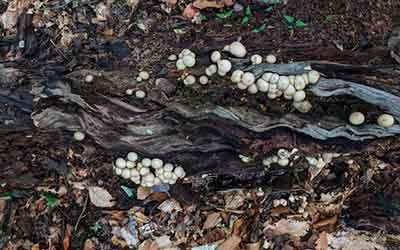

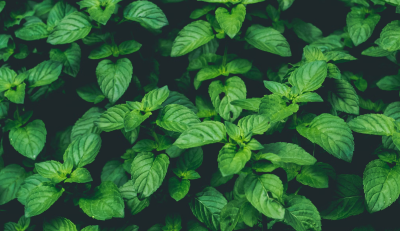


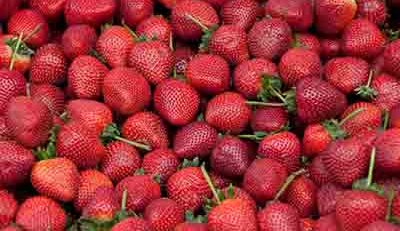

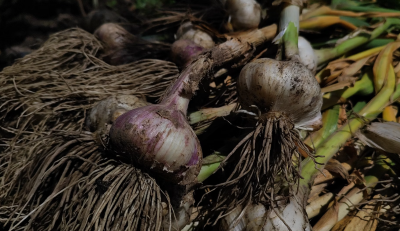


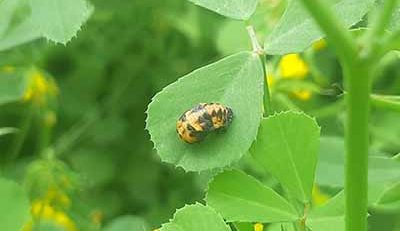
Leave a Reply